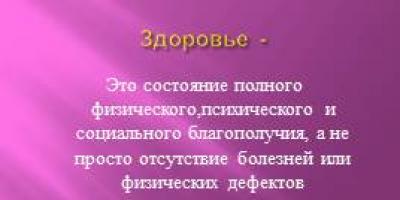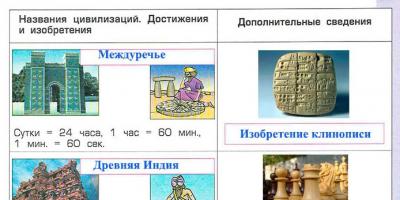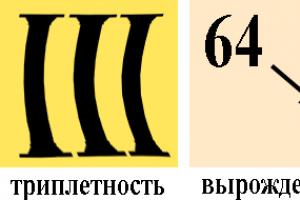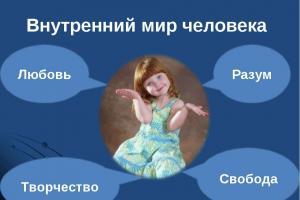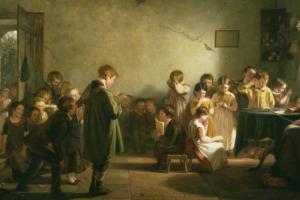1 of 23
Presentation - Use of health-saving technologies V.F. Bazarny in a modern educational institution
Text of this presentation
The use of health-saving technology by V. F. Bazarny in a modern educational institution Prepared by: teacher of MADOU d/s No. 78 “Gnome”, Belgorod Vetkova Elena Pavlovna

Health -
It is a state of complete physical, mental and social well-being and not merely the absence of disease or infirmity.

The educational process is built taking into account health-saving activities and includes:
1) Monitoring the health status and level of physical development of pupils. 2) Health-saving components in the organization of the educational process. 3) Health-improving and hardening activities. 4) Physical education and development forms of work with children. 5) Psychological and pedagogical support for children. 6) Working with family.

The leading idea of the technology is V.F. Bazarny: “Sensory freedom and psychomotor emancipation”

Characteristic features of V.F. technology Bazarny:
1) Children’s mobility during classes. 2) The natural conformity of the methods used - the educational process proceeds thanks to, and not despite, the natural nature of children. 3) Clear quantitative criteria by which the intellectual and psycho-physiological state of children is assessed: imagination, posture, visual acuity, etc.

An important feature of the organization of educational activities using the technology of V.F. Bazarny is the expansion of children’s motor activity.

Dynamic pose mode
To relieve stress V.F. Bazarny offers a mode of dynamic poses, which involve changing the children’s position (sitting and standing) at some stage of the lesson. The teacher needs to structure the lesson in such a way that the children move from a sitting position to a standing position several times.

Teaching children in the mode of changing dynamic poses

Advantages
Strengthening the spine Maintaining correct posture Developing a child’s sense of balance and coordination Preventing the musculoskeletal system Preventing diseases of the cardiovascular system Preventing myopia

Visual trainer

Positive influence
Reduced mental fatigue Reduced excessive nervous excitability Reduced aggression

Signal marks

Method of sensory-coordinating exercises “Four corners”. All exercises are performed in a free standing position: children make coordinated movements of the head, eyes and torso for 1.5–2 minutes. Bright images are recorded in the four corners of the group: pictures, figures, scenes from fairy tales, landscapes, etc. There is an important emotional and motivational factor here, which increases the physical and mental activity of children in the classroom and introduces sensory variety.

Method of visual coordination exercises

Standing on massage mats, with arms extended forward, to the music, children alternately trace trajectories with their index fingers while simultaneously tracking them with their organs of vision, torso, and arms. And then they draw an imaginary diagram on the ceiling, but with a larger scope and greater range of motion. Perfectly relieves tension, relaxes, relieves mental fatigue and excessive nervous excitability. Promotes goodwill, improves the sense of harmony and rhythm, and develops hand-eye coordination.

Touch cross
It is a device for attaching visual material. Didactic material is suspended on a sensory-didactic cross from the ceiling, which ensures oscillatory movements of visibility, which creates increased efficiency of visual perception.

Working with touch crosses

Touch cross

Positive effects of working with sensory crosses
Working with sensory crosses promotes the development of speech-motor function in children Prevents the development of the bowed head reflex Promotes more effective development of depth and stereoscopic vision Activates the neurodynamic processes of the brain Helps prevent visual fatigue and visual disorders
A comprehensive health care program based on the system of Bazarny V.F.
Khlyamina S.Zh., primary school teacher
MKOU "Public school of the village of Nachalo"
Privolzhsky district, Astrakhan region


- The search begins when a contradiction arises.
- In my teaching practice, I was faced with the problem of learning difficulties in primary school.
- One of the reasons is the disruption of students' health while studying at school.

Be healthy, student!
So how can you achieve high performance without restricting children to rigid boundaries of accepted behavior in the classroom, when they have to sit at a desk for several hours a day? How to preserve the health of children, protect them from overload and overwork? All this is impossible with traditional teaching methods. Therefore, as one of the ways to achieve my goal, I choose elements of V. F. Bazarny’s methodology . I believe that this technique will create a protective mode of communication aimed at maintaining optimal performance and preventing negative changes in the health of children. At this stage, I take only elements from the methodology of this scientist.

- Communicating with my colleagues from other schools, I became acquainted with the methodology of V.F. Bazarny.
- I adopted a lot in my comprehensive program from the experience of teachers at the Karagalinsky school.
- Now I work using the methodology of health-saving technologies.

- The relevance of studying health problems goes far beyond medical responsibility. Health acts as a measure of quality of life and happiness. Children enter school with large deviations: posture, gastritis, vision, general fatigue, overwork. Hence, a nervous state, passivity in lessons, poor memorization, sitting down, aggressiveness, etc. I noticed that children work in class for the first 20 minutes, and then get distracted or just relax - lie down on their desks and play. During recess, children need somewhere to put the energy accumulated during the lesson, so they run, jump, boys start fights, etc. - they need to move a lot, this is their peculiarity.


The leading idea of this technique is “sensory freedom and emancipation”
(V.F. Bazarny), revealed through the following lines:

1. Teaching students in dynamic poses mode. For this purpose, special height-measuring furniture with an inclined surface is used - desks and desks. Part of the lesson the student stands at a desk, the other part sits at a desk, thereby preserving and strengthening his bodily vertical, spine, posture - the basis of the energy of the human body.



Height furniture in the classroom
These desks are adjusted to the height of each child individually. Each new school year, the height of students in the class is measured and desks are color-coded.
The student is assigned a desk with a specific marking.


Desk for students
Teaching students to change dynamic poses helps prevent scoliosis and develop correct posture.

Signal marks
There are signal marks in the four corners of the cabinet. They depict pictures with a certain number of objects, from 1 to 4. The pictures are periodically replaced with new ones, depending on the plot. Children can easily navigate by looking at the signal marks.


Sensory training
The use of signal marks during physical education sessions activates the attention of children.


Students enjoy working with sensory crosses.


Foot massage mats
The parents knitted rugs for foot massage and sewed on buttons. Children can stand at desks and sit at desks using foot massagers.




The cards in the classroom show schematic illustrations of little men performing various gymnastic exercises. Children repeat the movements of the man.


Exercises for physical exercises
“Merry men” help conduct physical exercises.



Dynamic changes
Our school conducts 20-minute dynamic breaks for primary school students. Children rest during breaks. They play outdoor games.

- So, the technology I use involves:
- teaching students in the mode of dynamic poses (desk);
- methodology of sensory-coordinating training with the help of changing visual signal plots (pictures and numbers in the corners);
- foot massage mats;
- physical exercises, exercises to prevent various diseases.



Health-saving training
Aimed at ensuring the mental health of students.
It is based on – conformity with nature, continuity, variability, pragmatism (practical orientation).
Achieved through – taking into account the characteristics of the class (study and understanding of the person); creating a favorable psychological background in the classroom; the use of techniques that promote the emergence and maintenance of interest in educational material; creating conditions for students’ self-expression; initiation of various activities; prevention of physical inactivity.
Leads to – prevention of fatigue and fatigue; increasing motivation for educational activities; increase in educational achievements.

To use presentation previews, create a Google account and log in to it: https://accounts.google.com
Slide captions:
Health-saving technologies. Method of V.F. Bazarny Compiled by teacher-speech therapist Pomorina N.V. October, 2013 GBDOU kindergarten No. 2 combined type of Petrodvortsovo district of St. Petersburg
“HEALTH is reserves of strength: immune, protective, physical and spiritual. And they are not given initially, but are returned according to the laws of education. And the science of education is pedagogy” - V.F. Bazarny
Bazarny Vladimir Filippovich - scientist, doctor, musician and innovative teacher, head of the Research and Development Laboratory of Physiological and Health Problems of Education of the Administration of the Moscow Region (Sergiev Posad), Doctor of Medical Sciences, full member of the Academy of Creative Pedagogy, Honorary Worker of General Education of the Russian Federation . The founder of a new direction in science – health-development pedagogy. Together with his students, he created the theory of “Sensory freedom and psychomotor emancipation.” Bazarny Vladimir Filippovich
Methodology V.F. Bazarny is the only health-developing technology that is recognized as a scientific discovery by the Academy of Medical Sciences, protected by patents and copyrights, approved by the institutes of the Ministry of Health of the Russian Federation, RAMS, RAS, approved by the Government as a general federal program, and has been practically tested for 28 years on the basis of more than a thousand kindergartens and schools, has a sanitary and epidemiological conclusion from the Ministry of Health of the Russian Federation and allows you to build the educational process on the basis of the bodily vertical in accordance with the mobile nature of the child, and also gives a guaranteed result of improving the health of children in general. Methodology V.F. Bazarny
The main methods and techniques used in the health-saving technology of V. F. Bazarny include: Mode of dynamic change of poses. Exercises for hand-eye coordination. Visual coordination training using supporting visual-motor trajectories (ophthalmic simulators). Muscle-body coordination exercises. Mode of dynamic change of postures: The basis of V.F. Bazarny’s health care system is the regime of changing postures, in particular the transfer of children from a “sitting” position to a “standing” position. This is one of the non-drug methods of correcting the health of pupils. The maximum permissible length of time spent in one position is 20-25 minutes. “Don’t make me sit down!” - the commandment of the Bazarny. A child should move, especially a boy, 4-6 times more.
“Movement is air, and without air we suffocate,” wrote V. F. Bazarny. Therefore, joint educational activities with children in a mode of constant movement make it possible to develop in children a visual-motor reaction, in particular orientation in space, including a reaction to extreme situations, create conditions for the manifestation of individual and age-related characteristics of children, and create an atmosphere of trust, which serves optimal overall development of each child. The “dynamic change of postures” mode increases the body’s overall resistance to infectious diseases, prevents myopia, ensures the optimal functional state of the body’s cardiovascular system, and stabilizes the processes of excitation and inhibition in the central nervous system. To implement the mode of dynamic change of poses V.F. Bazarny offers:
1. USE OF A DESK DESK 2. and where possible – CHANGE THE CHILDREN’S POSITION: at tables – sitting, standing; on the carpet - sitting, standing, lying down; children can stand on massage mats in socks and while standing, listen to riddles, a story, a fairy tale, participate in mental calculations, and solve a logical problem.
This regime has a beneficial effect on the following factors: maintaining physical and mental activity in the mental sphere; has high indicators of physical health development; the immune system increases; growth processes improve; coordination of all organs develops (visual-manual, bodily-coordinating, psycho-emotional); the degree of low head inclination decreases.
Exercises for visual coordination Methods of sensory-coordinating training using changing visual-signal plots (pictures, numbers, letters, geometric shapes in the corners) “No obstruction to the eye!” - another principle of V.F. Bazarny. In the four upper corners there are figurative plot images. These are scenes from fairy tales, landscapes from nature, from the life of animals.
Children, standing freely on massage mats, begin to vividly fix their eyes on command on the corresponding number, picture, color. The counting mode is set in a random sequence and changes after 30 seconds. The total duration of the training is 1.5 minutes. Children with great pleasure perform turns while jumping with a clap; this causes a positive emotional outburst.
The effect of such exercises: this exercise has a beneficial effect on the development of visual-motor reactions; speed of orientation in space, as well as reaction to emergency situations in life; children develop visual-motor search activity, as well as visual-manual and bodily coordination; children become vigilant and attentive. It is very important that each child is at his own working distance, which is determined by the ophthalmologist at the beginning of the year based on the results of an examination for visual acuity and refraction in both eyes. Gymnastics for the eyes improves not only vision, but also trains the muscles of the face, which has a positive effect on the articulatory apparatus.
Method of working with an ophthalmic simulator Standing on massage mats, with arms extended forward, to music, children alternately trace trajectories with their index finger while simultaneously tracking it with their organ of vision, torso, and arms. Then they draw an imaginary diagram on the ceiling, but with a larger scope and greater range of motion. SCHEME OF VISUAL-MOTOR TRAJECTORIES Visual-coordination training with the help of supporting visual-motor trajectories (ophthalmic simulators)
This exercise is often performed after work that requires children to exert effort, because... The exercise perfectly relieves tension, relaxes, relieves mental fatigue and excessive nervous excitability. Promotes goodwill, improves the sense of harmony and rhythm, and develops hand-eye coordination. Exercises for muscle-body coordination The exercise is carried out in the mode of moving visual material, constantly searching and performing tasks that activate children’s attention. All kinds of cards can end up anywhere in the group. Children look for them, thereby switching their vision from near to long distance and vice versa. For example, a teacher shows didactic material first from a close distance, and then gradually moves away from the children, thereby training the eye muscles.
“SENSOR CROSSES” are used for physical activity during the lesson.
“Sensory crosses” are hung from the ceiling in a group. Various objects are attached to them (pictures in accordance with thematic planning and age, flat and three-dimensional geometric shapes, letters, words, etc.). During the educational activity, the teacher periodically draws the children’s attention to this or that manual, asks them to find something, name it, give a description, etc. Children look for the necessary material with their eyes, thereby training their eyesight, eliminating fatigue and tension from the eyes.
1. Paper ophthalmic simulators Various kinds of trajectories along which children “run” their eyes. Colored figures are depicted on a sheet of whatman paper (zigzags, ovals, eights, spirals, etc.). The thickness of the lines is one centimeter. Exercise options for developing visual perception
2. Pyramids Children are offered the following tasks: 1) Find two pyramids with your eyes. 2) Count how many red, green, black, etc. rings are in all the pyramids. 3) How many red caps, brown, green, yellow, etc. do the pyramids have? 4) How many rings do the pyramids have? 5) How many caps are there in total?
6) Fold the pyramids into two groups. In the first group there are two (twice) more pyramids than in the second. How many pyramids are there in the second group? This type of exercise can be used quite often, changing only the task options.
3. Plates with multi-colored circles Children are offered the following tasks: a) Find two identical plates. b) Find a plate that has a color that is not repeated in others. c) How many red, green, blue circles are there on all the plates? d) How many circles are there in total?
Special restorative visual games “Colorful Dreams” The game is played in a sitting position after hard work. As instructed by the teacher, children close their eyes, covering them with their palms, and lower their heads. The teacher names the colors, and the players try to “see” a given color in something with their eyes closed (blue sky, green grass, yellow sun, and so on). Having selectively surveyed the children about what they saw, the teacher names another color. When responding to the teacher who approaches the children and touches their shoulder, the children maintain their original position. The duration of one game cycle (each color) is 15–20 seconds, the total duration of the game is 1 minute.
Blind Man's Bluff. Players close their eyes tightly for 3-4 seconds. At this time, the teacher changes the location of the objects on the table, on the board, on the desk. Having opened their eyes at a signal, children strive to look for changes. The teacher selectively asks them what changes they noticed. When closing their eyes, children strain their eyelids as much as possible. The total duration of the game is 1.5 minutes. Special training visual games “Catch the Bunny” It is advisable to play in those classes where the visual load is the highest. Children stand in columns, hands on their belts, shoulders laid back, back straight, gaze directed upwards. The teacher is located in front on the side. He turns on the electric flashlight and “lets the bunny out” for a walk. The “bunny” runs in different directions along the walls and ceiling of the group. Children, having caught the “bunny” with their eyes, accompany him, trying not to let him out of sight, without turning their heads. The teacher marks the most diligent “hunters”.
In schools that use the Bazarny method, in the lower grades they write with ink and pen. Some researchers have concluded that using a ballpoint pen leads to breath holding, heart rhythm disturbances, and after 20 minutes of continuous writing, signs of angina may appear. When writing with a fountain pen, the hand works in a pulsed mode - first tension, then relaxation, so there is no harm to health. Recipes used in the Bazarny teaching system.
The use of a sensory panel allows you to bring joint activities with children closer to objects and phenomena of the ecological environment. Sensory or (ecological) panel
Works of Vladimir Bazarny: Vladimir BAZARNY. Children or money? NEW Vladimir BAZARNY. The basis for the introduction of health-development technology into the educational process of educational institutions of all types, Doctor of Medical Sciences. Bazarny V.F. “Teaching and raising children in an active sensory-developmental environment” and the acquisition of specialized educational equipment for its implementation. Vladimir BAZARNY. How to work at a desk? Vladimir BAZARNY. Do not expect a good breed from a bad seed. "Russian Federation today" No. 14, 2005 Vladimir BAZARNY. Mass primary prevention of school forms of pathology, or health-developing principles for designing educational and cognitive activities in kindergartens and schools. Krasnoyarsk 1989 Vladimir BAZARNY. Liberation of the child’s spiritual and mental potentials through artistic and imaginative environmentally “clean” copybooks. Part VI M. 1995 Increasing the efficiency of the formation of psychomotor functions in the process of development and learning of children with the help of production rhythms of bodily effort. Part IV. Sergiev Posad. 1996 Vladimir BAZARNY. Technique and methodology for liberating the neurophysiological basis of mental and physical development of students in the structures of the educational process. Part III. M. 1995 Vladimir BAZARNY. An express diagnostic program for the dynamics of psychosensory functional and physical development of students. Part II. Sergiev Posad, 1995 Vladimir BAZARNY. Neuropsychic fatigue of students in a traditional school environment. M. 1995
THANK YOU FOR YOUR ATTENTION! The presentation used materials from N.A. Stefanenko, candidate of pedagogical sciences, associate professor, methodologist of the Center for Scientific Education of the publishing house “Prosveshcheniye”.
Description of the presentation by individual slides:
1 slide
Slide description:
2 slide
Slide description:
“HEALTH is reserves of strength: immune, protective, physical and spiritual. And they are not given initially, but are returned according to the laws of education. And the science of education is pedagogy” - V.F. Bazarny
3 slide
Slide description:
Bazarny Vladimir Filippovich - scientist, doctor, musician and innovative teacher, head of the Research and Development Laboratory of Physiological and Health Problems of Education of the Administration of the Moscow Region (Sergiev Posad), Doctor of Medical Sciences, full member of the Academy of Creative Pedagogy, Honorary Worker of General Education of the Russian Federation . The founder of a new direction in science – health-development pedagogy. Together with his students, he created the theory of “Sensory freedom and psychomotor emancipation.” Bazarny Vladimir Filippovich
4 slide
Slide description:
Methodology V.F. Bazarny is the only health-developing technology that is recognized as a scientific discovery by the Academy of Medical Sciences, protected by patents and copyrights, approved by the institutes of the Ministry of Health of the Russian Federation, RAMS, RAS, approved by the Government as a general federal program, and has been practically tested for 28 years on the basis of more than a thousand kindergartens and schools, has a sanitary and epidemiological conclusion from the Ministry of Health of the Russian Federation and allows you to build the educational process on the basis of the bodily vertical in accordance with the mobile nature of the child, and also gives a guaranteed result of improving the health of children in general. Methodology V.F. Bazarny
5 slide
Slide description:
The main methods and techniques used in the health-saving technology of V. F. Bazarny include: Mode of dynamic change of poses. Exercises for hand-eye coordination. Visual coordination training using supporting visual-motor trajectories (ophthalmic simulators). Muscle-body coordination exercises. Mode of dynamic change of postures: The basis of V.F. Bazarny’s health care system is the regime of changing postures, in particular the transfer of children from a “sitting” position to a “standing” position. This is one of the non-drug methods of correcting the health of pupils. The maximum permissible length of time spent in one position is 20-25 minutes. “Don’t make me sit down!” - the commandment of the Bazarny. A child should move, especially a boy, 4-6 times more.
6 slide
Slide description:
“Movement is air, and without air we suffocate,” wrote V. F. Bazarny. Therefore, joint educational activities with children in a mode of constant movement make it possible to develop in children a visual-motor reaction, in particular orientation in space, including a reaction to extreme situations, create conditions for the manifestation of individual and age-related characteristics of children, and create an atmosphere of trust, which serves optimal overall development of each child. The “dynamic change of postures” mode increases the body’s overall resistance to infectious diseases, prevents myopia, ensures the optimal functional state of the body’s cardiovascular system, and stabilizes the processes of excitation and inhibition in the central nervous system. To implement the mode of dynamic change of poses V.F. Bazarny offers:
7 slide
Slide description:
1. USE OF A DESK DESK 2. and where possible – CHANGE THE CHILDREN’S POSITION: at tables – sitting, standing; on the carpet - sitting, standing, lying down; children can stand on massage mats in socks and while standing, listen to riddles, a story, a fairy tale, participate in mental calculations, and solve a logical problem.
8 slide
Slide description:
This regime has a beneficial effect on the following factors: maintaining physical and mental activity in the mental sphere; has high indicators of physical health development; the immune system increases; growth processes improve; coordination of all organs develops (visual-manual, bodily-coordinating, psycho-emotional); the degree of low head inclination decreases.
Slide 9
Slide description:
Exercises for visual coordination Methods of sensory-coordinating training using changing visual-signal plots (pictures, numbers, letters, geometric shapes in the corners) “No obstruction to the eye!” - another principle of V.F. Bazarny. In the four upper corners there are figurative plot images. These are scenes from fairy tales, landscapes from nature, from the life of animals.
10 slide
Slide description:
Children, standing freely on massage mats, begin to vividly fix their eyes on command on the corresponding number, picture, color. The counting mode is set in a random sequence and changes after 30 seconds. The total duration of the training is 1.5 minutes. Children with great pleasure perform turns while jumping with a clap; this causes a positive emotional outburst.
11 slide
Slide description:
The effect of such exercises: this exercise has a beneficial effect on the development of visual-motor reactions; speed of orientation in space, as well as reaction to emergency situations in life; children develop visual-motor search activity, as well as visual-manual and bodily coordination; children become vigilant and attentive. It is very important that each child is at his own working distance, which is determined by the ophthalmologist at the beginning of the year based on the results of an examination for visual acuity and refraction in both eyes. Gymnastics for the eyes improves not only vision, but also trains the muscles of the face, which has a positive effect on the articulatory apparatus.
12 slide
Slide description:
Method of working with an ophthalmic simulator Standing on massage mats, with arms extended forward, to music, children alternately trace trajectories with their index finger while simultaneously tracking it with their organ of vision, torso, and arms. Then they draw an imaginary diagram on the ceiling, but with a larger scope and greater range of motion. SCHEME OF VISUAL-MOTOR TRAJECTORIES Visual-coordination training with the help of supporting visual-motor trajectories (ophthalmic simulators)
Slide 13
Slide description:
This exercise is often performed after work that requires children to exert effort, because... The exercise perfectly relieves tension, relaxes, relieves mental fatigue and excessive nervous excitability. Promotes goodwill, improves the sense of harmony and rhythm, and develops hand-eye coordination. Exercises for muscle-body coordination The exercise is carried out in the mode of moving visual material, constantly searching and performing tasks that activate children’s attention. All kinds of cards can end up anywhere in the group. Children look for them, thereby switching their vision from near to long distance and vice versa. For example, a teacher shows didactic material first from a close distance, and then gradually moves away from the children, thereby training the eye muscles.
Slide 14
Slide description:
15 slide
Slide description:
“Sensory crosses” are hung from the ceiling in a group. Various objects are attached to them (pictures in accordance with thematic planning and age, flat and three-dimensional geometric shapes, letters, words, etc.). During the educational activity, the teacher periodically draws the children’s attention to this or that manual, asks them to find something, name it, give a description, etc. Children look for the necessary material with their eyes, thereby training their eyesight, eliminating fatigue and tension from the eyes.
16 slide
Slide description:
1. Paper ophthalmic simulators Various kinds of trajectories along which children “run” their eyes. Colored figures are depicted on a sheet of whatman paper (zigzags, ovals, eights, spirals, etc.). The thickness of the lines is one centimeter. Exercise options for developing visual perception
Slide 17
Slide description:
2. Pyramids Children are offered the following tasks: 1) Find two pyramids with your eyes. 2) Count how many red, green, black, etc. rings are in all the pyramids. 3) How many red caps, brown, green, yellow, etc. do the pyramids have? 4) How many rings do the pyramids have? 5) How many caps are there in total?
18 slide
Slide description:
6) Fold the pyramids into two groups. In the first group there are two (twice) more pyramids than in the second. How many pyramids are there in the second group? This type of exercise can be used quite often, changing only the task options.
Slide 19
Slide description:
3. Plates with multi-colored circles Children are offered the following tasks: a) Find two identical plates. b) Find a plate that has a color that is not repeated in others. c) How many red, green, blue circles are there on all the plates? d) How many circles are there in total?
20 slide
Slide description:
Special restorative visual games “Colorful Dreams” The game is played in a sitting position after hard work. As instructed by the teacher, children close their eyes, covering them with their palms, and lower their heads. The teacher names the colors, and the players try to “see” a given color in something with their eyes closed (blue sky, green grass, yellow sun, and so on). Having selectively surveyed the children about what they saw, the teacher names another color. When responding to the teacher who approaches the children and touches their shoulder, the children maintain their original position. The duration of one game cycle (each color) is 15–20 seconds, the total duration of the game is 1 minute.
21 slides
Slide description:
Blind Man's Bluff. Players close their eyes tightly for 3-4 seconds. At this time, the teacher changes the location of the objects on the table, on the board, on the desk. Having opened their eyes at a signal, children strive to look for changes. The teacher selectively asks them what changes they noticed. When closing their eyes, children strain their eyelids as much as possible. The total duration of the game is 1.5 minutes. Special training visual games “Catch the Bunny” It is advisable to play in those classes where the visual load is the highest. Children stand in columns, hands on their belts, shoulders laid back, back straight, gaze directed upwards. The teacher is located in front on the side. He turns on the electric flashlight and “lets the bunny out” for a walk. The “bunny” runs in different directions along the walls and ceiling of the group. Children, having caught the “bunny” with their eyes, accompany him, trying not to let him out of sight, without turning their heads. The teacher marks the most diligent “hunters”.
Slide description:
Works of Vladimir Bazarny: Vladimir BAZARNY. Children or money? NEW Vladimir BAZARNY. The basis for the introduction of health-development technology into the educational process of educational institutions of all types, Doctor of Medical Sciences. Bazarny V.F. “Teaching and raising children in an active sensory-developmental environment” and the acquisition of specialized educational equipment for its implementation. Vladimir BAZARNY. How to work at a desk? Vladimir BAZARNY. Do not expect a good breed from a bad seed. "Russian Federation today" No. 14, 2005 Vladimir BAZARNY. Mass primary prevention of school forms of pathology, or health-developing principles for designing educational and cognitive activities in kindergartens and schools. Krasnoyarsk 1989 Vladimir BAZARNY. Liberation of the child’s spiritual and mental potentials through artistic and imaginative environmentally “clean” copybooks. Part VI M. 1995 Increasing the efficiency of the formation of psychomotor functions in the process of development and learning of children with the help of production rhythms of bodily effort. Part IV. Sergiev Posad. 1996 Vladimir BAZARNY. Technique and methodology for liberating the neurophysiological basis of mental and physical development of students in the structures of the educational process. Part III. M. 1995 Vladimir BAZARNY. An express diagnostic program for the dynamics of psychosensory functional and physical development of students. Part II. Sergiev Posad, 1995 Vladimir BAZARNY. Neuropsychic fatigue of students in a traditional school environment. M. 1995
25 slide
Slide description:
THANK YOU FOR YOUR ATTENTION! The presentation used materials from N.A. Stefanenko, candidate of pedagogical sciences, associate professor, methodologist of the Center for Scientific Education of the publishing house “Prosveshcheniye”.

The main reasons for children's ill health are: The focus is on educational standards rather than prioritizing health. The motor-dynamic image of the child is not taken into account. Adults do not form in preschoolers the functional maturity of those systems that bear the brunt of school loads at school. Classes at preschool educational institutions are held mainly in near and partially distant vision mode. Children spend most of their time indoors, in limited spaces. The game began to have educational purposes and only partially educational ones. Children are overloaded with activities and have no time for free, creative, playful activities.

Bazarny Vladimir Filippovich - scientist, doctor, musician and innovative teacher, Doctor of Medical Sciences, full member of the Academy of Creative Pedagogy, Honorary Worker of General Education of the Russian Federation. He devoted about 30 years to solving the problem of preventing a demographic catastrophe by preserving and strengthening the health of its younger generations. In his research, he convincingly showed that the existing system of raising and educating children in families, kindergartens and schools is oriented against the nature of the child. He created a system of pedagogical technologies that make it possible to teach children while maintaining and strengthening their health.

Organization of children's choral singing in classical and folk music; Include in the acts of memorization as many senses as possible (vision - models, images; hearing, touch); Rhythmically - pressure writing with a fountain pen is a universal method of forming fine working movements of the hands in children and adolescents; Separately - parallel education for boys and girls (joint clubs, evenings, holidays). Optimal pace, taking into account the performance of children. V.F. Bazarny recommends

Dynamic posture mode: periodic change of postures, transferring children from a traditional sitting training posture to a standing posture. The first method does not require material costs: where possible, change the position of the children (sitting and standing). The second method is to use a desk desk with an inclined surface that is optimal for visual work and a variable height of the working surface.




Methodology of sensory-coordinating training In the four upper corners of the classroom, bright, attention-grabbing figurative and plot images are recorded; Under each picture one of the numbers is placed in the appropriate sequence: ; Under the teacher’s commands “…”, etc. Children begin to quite vividly fix their gaze one by one on the picture corresponding to a given number. The duration of fixation of one image at the very beginning of such exercises is on average 0.5 seconds; The counting mode (order) changes to the opposite after 30 seconds: ...; In the final part of the training (lasting seconds), the counting mode is set in a random sequence, for example: , etc.; The total duration of the entire training session takes on average 1.5 minutes.

Methods of teaching children in the “visual horizons” mode Didactic material is placed at the greatest possible distance from the children Constructing many stages of the lesson in the mode of moving objects Organize the movement of visual educational material, constant search and activation of children's tasks



METHOD OF VISUAL-COORDINATORY TRAINING USING THE SCHEME OF UNIVERSAL SYMBOLS Mode 1 of involuntary visual-motor “sliding” along trajectories. Mode 2 Children periodically stand in the center under the simulator circuit and, following the orienting arrows of the trajectories with their eyes, perform the corresponding exercise. At the same time, they perform involuntary combined movements with their eyes, head and torso.

Mode 3 Children, fixing trajectories with their gaze (i.e. with their heads constantly raised), first learn to “go around” the trajectory patterns, and then “run around”. Mode 4 A poster with a diagram is placed on the wall opposite the face. The activity consists of alternately tracing trajectories with the index finger while simultaneously following it with the eyes.







What do V.F. technologies provide? Bazarny: Guaranteed, fixed result of improving the health of pupils; Increasing the level of academic performance and efficiency of the educational process; Psychological comfort in an educational institution; An effective way to prevent disorders in the development of the spine, myopia, neuropsychic and cardiovascular stress, early osteochondrosis, flat feet.

: The only health-saving technology: recognized as a scientific discovery by the Academy of Medical Sciences; protected by patents and copyrights; approved by the institutes of the Ministry of Health of the Russian Federation, RAMS, RAS; approved by the Government as a general federal program; passed practical testing for 28 years on the basis of more than a thousand kindergartens and schools; has a sanitary-epidemiological conclusion from the Ministry of Health of the Russian Federation;



